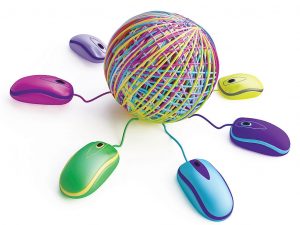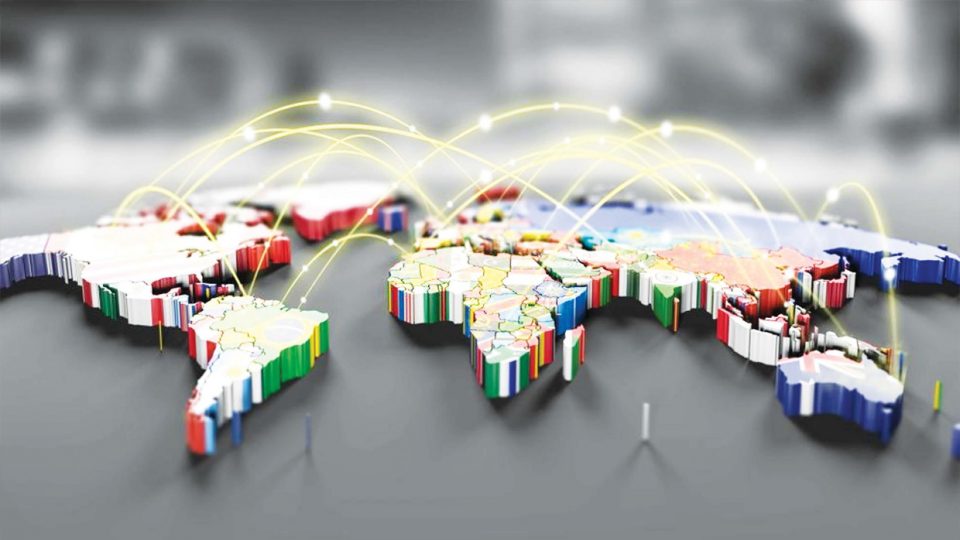An in-depth analysis
The pandemic coronavirus is giving rise to an economic slowdown along with immense human grief. The global outbreak has affected many businesses and is creating a havoc in the fashion industry as well. The spread of the virus is bound to have serious implications and companies have started feeling the impact with store closures and uncertainty in orders. The apparel industry will witness certain changes in the post-pandemic phase.
Described below are some of the key trends and impact of the coronavirus pandemic on the global textile and apparel industry
Retail Stores Closure is Forcing Brands to Hold Orders
Brands across the globe have announced temporary closure of their stores in an unprecedented move to prevent the spread of coronavirus. Retail stores in major markets – USA and Europe – have been closed for weeks now and are expecting a prolonged closure in the wake of the virus. Moreover, retailers will continue to offer their employees full pay and benefits during this time. Brands are facing a significant decline in their sales and are preparing themselves for potential revenue losses.
Store footfall will see a slow progression when the retail outlets reopen, as initially people will avoid crowded places. In addition, customers will pull back on spending and limit their purchases to essential commodities. The closure of stores has left brands to deal with surplus inventory, which they would need to stock out before the season ends. This is compelling buyers to cancel their further orders or reduce quantities, which will take a toll on apparel manufacturers.
China slowly coming back
After a two-month long production shutdown, Chinese textile & apparel manufacturers are gradually commencing operations. However, with majority of the world still stuck on the virus curve, manufacturers might find it difficult to fill their capacities due to unavailability of orders. Fashion brands sourcing from China for the autumn season generally place their orders during this month with a delivery in May or June. With an uncertainty in the situation and the lockdown period ahead, buyers are hesitating to place any new orders and are in fact either cancelling or putting their existing orders on hold. With virus growing in other countries China has increased production of medical textiles like masks and other personal protective equipment and are exporting the same to other countries.
Brands will further Look to Reduce Dependency on China
China manufactures more than a third of all clothing and textiles globally. China was the initial epicenter

of the coronavirus outbreak and the production lockdown enforced in the country vastly disrupted the textile & apparel supply chain. Apparel brands who sourced goods solely from China were in a fix and were forced to explore other countries for sourcing in a short time period.
Some brands will follow the strategy of diversification and reduce their dependency on China to prevent any such situation in the future. Brands were already actively pursuing the move of diversifying from China, owing to increase in manufacturing costs and tariff issues with USA. The supply chain gap developed due to this pandemic has added more weightage to this strategy.
Many Asian manufacturing nations such as Bangladesh and Vietnam are dependent on China for their fabric supply. Now, Asian countries are also developing their local supply chain in order to avoid any gaps in the supply chain in the future course.
Global Demand of Medical Textiles Increases
Sales of medical protective gears including surgical masks and protective clothing has jumped drastically. Western nations are importing large quantities of such products to battle the disease. The supply of these products is not able to keep up with the rising demand. The rapid spread of the disease across the globe has sensitized people to hygiene and healthcare. The demand for medical protective gear such as masks, disposable gloves and hygiene products such as wipes is expected to surge and sustain even after the end of the coronavirus pandemic. This is a lucrative opportunity for the textile industry in the near future.
Fashion Events Stalled
The coronavirus pandemic has put a halt to international travel and this has immediately affected the annual fashion events including fashion shows, trade shows and conferences. These events draw huge crowds and allow buyers to see the latest fashion trends. Most of the lined up fashion events of 2020 have been either postponed or cancelled. The postponing of these events may slow down new investments and impact the businesses of the existing stakeholders.

Increased Focus on E-Commerce Sales and Digitalization of Supply Chain
In order to avoid the incidence of crowds and reduce the spread of coronavirus, malls and retailers took the step to close their brick and mortar stores. But the e-commerce channel of these stores are still operational in certain countries. During the initial phase of coronavirus, consumers increased their online purchasing as a safe alternative to visiting physical stores. This shift could lead to a changed buying behavior post the pandemic and has the potential to build longtime e-commerce customers.
Brands and retailers are further driven to incorporate digital strategy in their buying process. Online marketplaces like Joor are expected to become more popular as brands and retailers look to maximize digital options of showcasing their products and facilitating the buying and selling process.
What is in Store for India’s Textile & Apparel Industry
The black swan event has affected the Indian textile & apparel industry, in terms of both trade and domestic consumption. With the steep reduction in demand due to sudden halt of global trade and domestic sales due to the closure of retail stores, the industry is likely to face unprecedented and severe losses.

The spread of the virus initiated in China and later spread to EU and USA. These are huge markets for Indian textile & apparel products and hence, the Indian textile value chain is bound to face adverse repercussions of the pandemic. Brands are expected to postpone orders in the upcoming six months and will initially demand smaller order quantities at very tight margins as a step to recover from the reduced sales in the previous weeks.
Coming to the domestic market, brands are looking at very low consumer sentiment and a steep decline in consumption in the coming year. Retailers and brands have already started halting production lines, delayed season releases and cut buying budgets to prepare for these eventualities
With the lockdown there has been a migration of migrant workers going back to their respective places. It will be a challenge to get these labour back to work once the restrictions are lifted and hence Industry needs to be geared up for this.
How can Indian Textile & Apparel Industry Emerge from this Pandemic

The Indian textile & apparel industry will need to gear itself to fight the economic consequences that the coronavirus has brought with it. Manufacturers need to maximize their internal capabilities and focus on building their efficiencies. This will enable them to work with the anticipated shorter lead times and tight margins. Companies should further focus on adopting digital ways of connecting with buyers.
Textile and apparel companies need to maintain close connect with buyers and be ready to respond to buyer requirements. Companies may also focus on planning for the winter or next spring summer season and target the channels of value retailing and ecommerce which are expected to grow in the near future. Indian companies should also look out for new markets beyond US and EU like Japan, South Korea etc. and focus on diversifying both markets and products.
Companies could also explore emerging product categories such as medical textiles (surgical gloves, personal protective masks, gowns, wipes, etc.) and other textile items required for healthcare facilities like hospital bedsheets, mattresses etc. With countries’ increased focus on healthcare, medical textiles is likely to see a surge in demand.
With depressed prices of raw materials like polyester, cotton etc. textile and apparel companies can also look at hedging raw material prices and wherever possible stock raw material which will be helpful once the market opens again.
The government has recently announced a few relief measures for the industry which will help mitigate the crisis being faced by companies. Some of these measures are given below:
- The Rebate of State and Central Taxes & Levies (RoSCTL) on apparel and made-ups has been extended for the upcoming financial year until merged with Remission of Duties and Taxes on Exported Products (RoDTEP). This will make the textile sector more competitive and boost exports.
- The government has announced to pay the entire employee provident fund for establishments with up to 100 employees where 90% of the employees are earning less than Rs. 15,000. This will be a huge aid for the labour intensive small and medium scale apparel manufacturers.
- The Reserve Bank of India has“ announced a moratorium of up to 3 months on payment of instalments of term loans. `
- With the current lockdown in place factories are shut and it is unpredictable when the operations will start again. However, textile and apparel companies need not lose all hope and need to be patient and be ready whenever markets open again, hopefully well in time before the festive season.
Contributed by: Wazir Advisors




